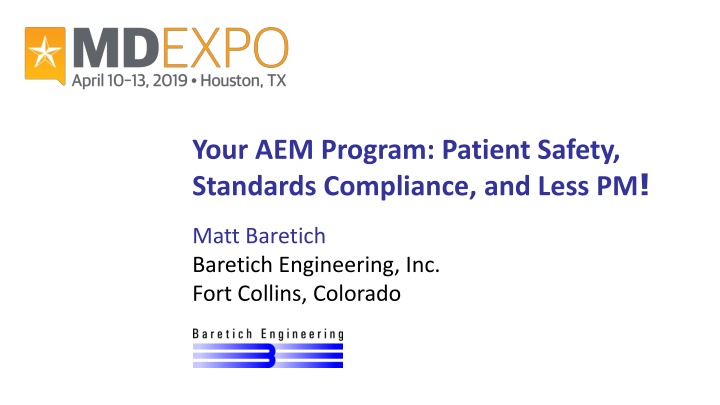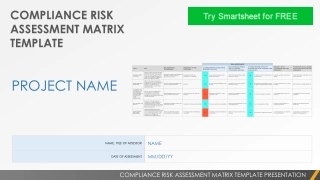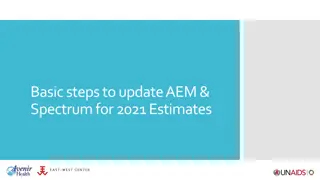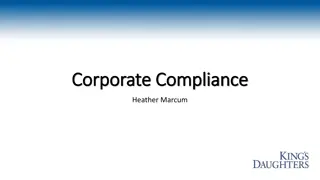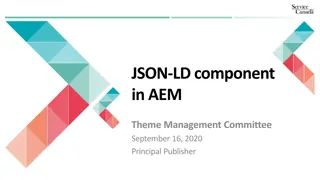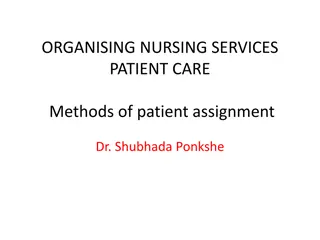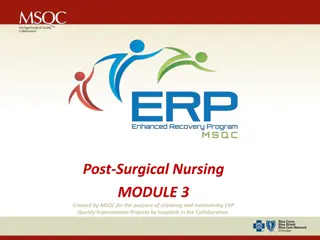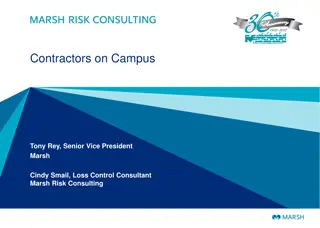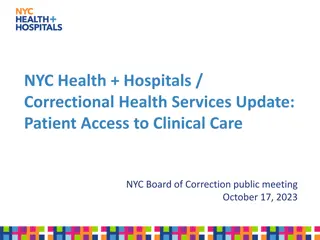Your AEM Program: Patient Safety, Standards Compliance, and Less PM
An AEM program focuses on patient safety, standards compliance, and reducing planned maintenance costs. It involves following alternative equipment maintenance procedures to ensure equipment safety equivalent to manufacturer recommendations. Learn the definitions and benefits of AEM programs through practical examples and comparisons with traditional maintenance practices.
Download Presentation

Please find below an Image/Link to download the presentation.
The content on the website is provided AS IS for your information and personal use only. It may not be sold, licensed, or shared on other websites without obtaining consent from the author.If you encounter any issues during the download, it is possible that the publisher has removed the file from their server.
You are allowed to download the files provided on this website for personal or commercial use, subject to the condition that they are used lawfully. All files are the property of their respective owners.
The content on the website is provided AS IS for your information and personal use only. It may not be sold, licensed, or shared on other websites without obtaining consent from the author.
E N D
Presentation Transcript
Your AEM Program: Patient Safety, Standards Compliance, and Less PM! Matt Baretich Baretich Engineering, Inc. Fort Collins, Colorado
What is an AEM program? CMS: Alternate Equipment Management TJC: Alternative Equipment Maintenance CMS premise: Manufacturer knows best CMS & TJC communication: Inconsistent
Why implement an AEM program? Reduce PM cost, consistent with the following criteria Equipment safety equivalent to manufacturer recommendations Compliance with CMS and TJC requirements
Definitions PM = Planned Maintenance PM Activity = What we do PM Frequency = When we do it
Definitions PM (Planned Maintenance) includes: Device Restoration PM Safety Verification PM
Definitions Device Restoration PM Intended to reduce the likelihood of failure Genuine preventive maintenance
Safety Verification PM examples Personal: blood pressure check, colonoscopy Personal vehicle: check oil level, check tire pressure Diesel motor-generator: test oil, monthly load test Medical equipment ...
Definitions PM Procedure = A set of PM activities and PM frequencies PMOEM = PM that follows the procedure recommended by the manufacturer PMAEM = PM that follows an AEM procedure
PM procedure for the Acme 123 (Step 1) PMOEM Replace the beaucoup-bucks widget every 24 months PMAEM Take a look at the widget every 24 months and replace it only if it s bad
PM procedure for the Acme 123 (Step 2) PMOEM Verify the flow rate every 12 months PMAEM Verify the flow rate every 18 months
PM procedure for the Acme 123 (Step 3) PMOEM Give 3 cheers to the manufacturer every 12 months PMAEM Don t bother
Table 1. HAP EC.02.04.01 EP4 The hospital identifies the activities and associated frequencies, in writing, for maintaining, inspecting, and testing all medical equipment on the inventory. These activities and associated frequencies are in accordance with manufacturers recommendations or with strategies of an AEM program.
Table 1. HAP EC.02.04.01 EP4 Note 1: The strategies of an AEM program must not reduce the safety of equipment and must be based on accepted standards of practice, such as the ANSI/AAMI handbook ANSI/AAMI EQ56:2013, Recommended practice for a medical equipment management program.
Table 1. HAP EC.02.04.01 EP4 Note 2: Medical equipment with activities and associated frequencies in accordance with manufacturers recommendations must have a 100% completion rate.
Table 1. HAP EC.02.04.01 EP4 Note 3: Scheduled maintenance activities for both high-risk and non-high-risk medical equipment in an alternative equipment maintenance (AEM) program inventory must have a 100% completion rate. AEM frequency is determined by the hospital s AEM program.
Requirements for On-Schedule PM Completion of Scheduled Maintenance On-Schedule PM Completion PMOEM PMAEM 100% 100% High-Risk 100% 100% Non-High-Risk
Sidebar: On-Schedule PM Completion
Completed PM Completion = Scheduled Unavailable
Getting to 100% Document legitimate unavailability: cannot locate, in use, etc. Only medical equipment: diagnosis, treatment, monitoring AEM program to take some off PM schedule Wide completion window*
PM completion window TJC standardization MAYBE Scheduled maintenance interval greater than 6 months: scheduled month 30 days. Scheduled maintenance interval of 3 to 6 months: scheduled month 20 days Scheduled maintenance interval of 1 or 2 months: scheduled month.
Table 2. HAP EC.02.04.01 EP5 The hospital s activities and frequencies for inspecting, testing, and maintaining the following items must be in accordance with manufacturers recommendations:
Table 2. HAP EC.02.04.01 EP5 Equipment subject to federal or state law or Medicare conditions of participation in which inspecting, testing, and maintaining must be in accordance with the manufacturers recommendations, or otherwise establishes more stringent maintenance requirements
Table 2. HAP EC.02.04.01 EP5 Medical laser devices
Table 2. HAP EC.02.04.01 EP5 Imaging and radiologic equipment (whether used for diagnostic or therapeutic purposes)
Table 2. HAP EC.02.04.01 EP5 New medical equipment with insufficient maintenance history to support the use of AEM strategies
Table 3. HAP EC.02.04.01 EP6 A qualified individual(s) uses written criteria to support the determination whether it is safe to permit medical equipment to be maintained in an alternate manner that includes the following:
Table 3. HAP EC.02.04.01 EP6 How the equipment is used, including the seriousness and prevalence of harm during normal use Likely consequences of equipment failure or malfunction, including seriousness of and prevalence of harm
AEM-related risk assessments Overall risk level of a device type: Is this infusion pump a high-risk device? Risk levels for failure modes (FMEA): What is the risk of battery failure for this infusion pump? Risk for PMAEM procedures: Is it safe to do flow-rate testing less often?
Step 1: Select equipment for your AEM program Can you save PM time? Is it on your taboo list? What is the level of risk?
Step 2: Review the PMOEM Are there PM activities that can be safely modified or eliminated? Are there PM frequencies that can be safely extended? Are there safe alternative PM strategies?
Step 3: Implement your PMAEM Spell out the modified PM procedure Get the modified procedure approved Update your CMMS Communicate with front-line HTM personnel
Step 4: Monitor equipment safety Routinely monitor your equipment safety metric Periodically revisit your PMAEM decisions Adjust the AEM program as needed
Sidebar: How to measure equipment safety for your PM program
Useful metrics Patient incidents Downtime: Hours per device per year Availability: Hours per device per year required service hours
Useful metrics Failure rate: Failures per device per year Mean time between failures (MTBF)
PM-related Failures Obvious failures: Recognizable by users; potentially preventable Example: Failure of infusion pump battery Example: Ventilator component wear-out Hidden failures: Not user-recognizable; patient care impact Example: Low defibrillator output Example: Occlusion pressure sensor failure
Mean Time Between PM-Related Failures (# devices)(# years analyzed) (obvious failures+hidden failures) MTBFPM =
Quality assurance for the PM program Monitor MTBFPM over time by device type Focus on high-risk device types Consider using SPC tools to identify problems Respond to identified problems Adjust AEM procedures as needed Periodically revisit AEM decision-making
Matthew F. Baretich, P.E., Ph.D. Baretich Engineering, Inc. P.O. Box 469 Fort Collins CO 80522-0469 970-493-8239 mfb@baretich.com www.baretich.com
